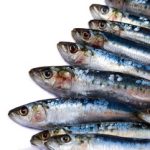Nannochloropsis is a genus of microalgae that has gained attention as a well-established feed source in aquaculture due to its high nutritional value and ability to support the growth and development of various aquatic organisms.
Nutritional Composition
Nannochloropsis is rich in essential nutrients required for the growth of aquatic organisms. It contains high levels of proteins, especially lipids which include omega-3 fatty acids such as EPA [eicosapentaenoic acid, C20:5n3] and DHA, vitamins, minerals, and antioxidants. The omega-3 fatty acids are particularly valuable because of their health benefits. The balanced nutritional profile of Nannochloropsis makes it a suitable feed source for a wide range of aquaculture species.
Digestibility and Bioavailability
The cell structure of Nannochloropsis is relatively soft and easily digestible for many aquatic organisms. The small size of the cells and the absence of rigid cell walls enhance the bioavailability of nutrients, allowing efficient absorption and utilization by fish and other aquatic species.
Growth Promotion
Nannochloropsis has been shown to promote growth and improve feed conversion efficiency in various aquaculture species. The high protein content, amino acid profile, and presence of essential fatty acids contribute to enhanced growth rates, increased survival, and improved overall health of the cultured organisms.
Pigmentation and Palatability
Nannochloropsis contains natural pigments, such as chlorophylls and carotenoids, which enhance the coloration of fish and other aquatic organisms. These pigments are essential for the development of vibrant colors, particularly in ornamental fish. Additionally, the presence of these pigments often improves the palatability and acceptance of Nannochloropsis-based feeds by aquaculture species.
Environmental Benefits
The cultivation of Nannochloropsis for aquaculture feed offers several environmental benefits. Microalgae, including Nannochloropsis, have a high photosynthetic efficiency and can utilize nutrients, including nitrogen and phosphorus, from wastewater streams in aquaculture facilities. This helps in nutrient remediation and reduces the environmental impact of aquaculture operations.
Sustainability and Alternative to Fishmeal
The increasing demand for aquaculture feed has put significant pressure on wild fish stocks used for fishmeal production. Nannochloropsis and other microalgae offer a sustainable alternative to fishmeal, reducing the reliance on wild-caught fish as feed ingredients. Cultivating microalgae as a feed source can contribute to the development of more sustainable and environmentally friendly aquaculture practices.
Challenges and Considerations
Despite the potential benefits, there are certain challenges associated with the use of Nannochloropsis as an aquaculture feed. These include the cost of production, scalability of cultivation, and the need for efficient harvesting and processing techniques. Additionally, the formulation of complete diets incorporating Nannochloropsis and ensuring balanced nutrition for specific aquaculture species requires careful research and optimization.
Nannochloropsis microalgae offer a promising feed source for aquaculture due to their nutritional composition, digestibility, growth-promoting properties, and environmental benefits. Further research and technological advancements in microalgae cultivation and processing techniques will help unlock the full potential of Nannochloropsis as a sustainable and viable feed option for the aquaculture industry.



Leave a Reply